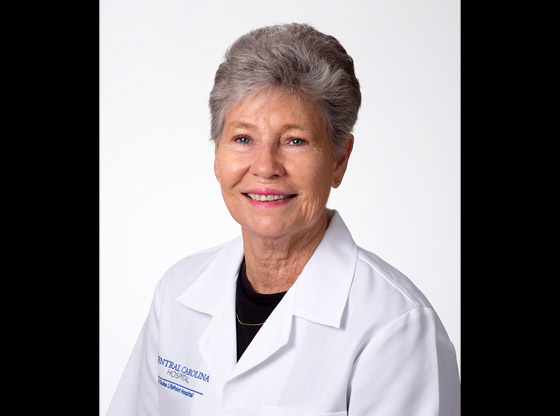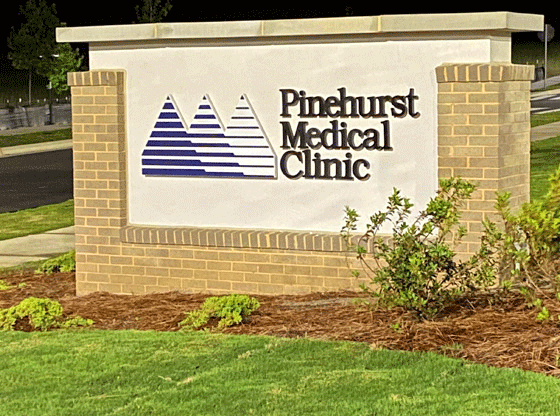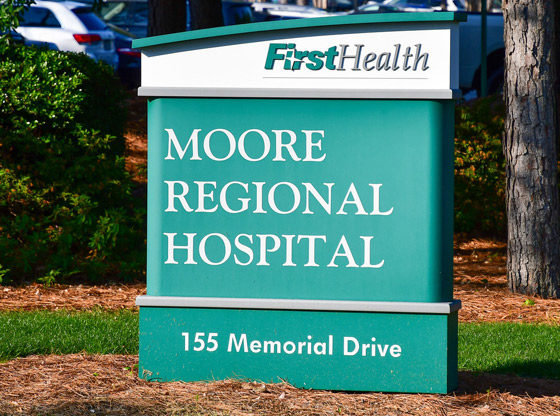In 2016, the stroke care program at FirstHealth Moore Regional Hospital treated 682 stroke and TIA (transient ischemic attack) patients.
That program, which has been certified by The Joint Commission as a Primary Stroke Center, recently received the American Heart Association/American Stroke Association’s Get with the Guidelines-Stroke Silver plus Quality Achievement Award with Target: Stroke Honor Roll Elite Plus. The award recognizes Moore Regional’s commitment and success in ensuring that stroke patients get the most appropriate treatment according to nationally recognized, research-based guidelines based on the latest scientific evidence.
To receive the Silver Plus Quality Achievement Award, hospitals must achieve 85 percent or higher adherence to all Get With The Guidelines-Stroke achievement indicators for at least 12 consecutive months and during the same period achieve 75 percent or higher compliance with five of eight Get With The Guidelines-Stroke Quality measures.
To qualify for the Target: Stroke Honor Roll Elite Plus, hospitals must meet quality measures developed to reduce the time between the patient’s arrival at the hospital and treatment with the clot-buster tissue plasminogen activator, or tPA, the only drug approved by the U.S. Food and Drug Administration to treat ischemic stroke. If given intravenously in the first three hours after the start of stroke symptoms, tPA has been shown to significantly reduce the effects of stroke and lessen the chance of permanent disability.
According to Director of Quality Lori Lefler, R.N., patients who arrive at Moore Regional Hospital experiencing stroke symptoms can be assured that they will be cared for by a staff that is trained in the most up-to-date guidelines established by both the American Heart Association and the American Stroke Association.
“We work diligently to rapidly identify the source of stroke symptoms so patients can be treated in a timely manner,” Lefler says. “Our program is a multidisciplinary team that includes neurohospitalists who are experts in treating patients with TIA and stroke, and they work collaboratively with our emergency physicians, nursing staff, pharmacists and imaging staff to provide the most current recommended care for acute stroke. This attention to rapid identification and treatment can improve outcomes for our patients long term.”
Stroke Coordinator Kym Lariviere, R.N., believes that team collaboration is pivotal to the success of Moore Regional’s stroke program.
“We continuously evaluate our program to improve our processes while focusing on overall teamwork with the FirstHealth network and our neighboring hospital systems to achieve the best treatment for our stroke patient population,” Lariviere says.
She cites the recent implementation of a Telestroke program as yet another step in the advancement of FirstHealth’s stroke service. Using robots located in each of the three FirstHealth hospitals with an emergency department, FirstHealth physicians can now remotely evaluate and issue treatment orders for patients exhibiting stroke or TIA symptoms.
A monitor atop each robot provides a real-time face-to-face physician experience with a patient who may be miles away.
“The Telestroke program was an expansion of our team efforts at Moore Regional to our outlying facilities to provide more thorough neurologist evaluation 24/7 for suspected acute stroke patients,” Lariviere says. “This has allowed us to further pursue the best quality care and outcomes for stroke patients.”
*firsthealth.org
**photo courtesy of firsthealth

















